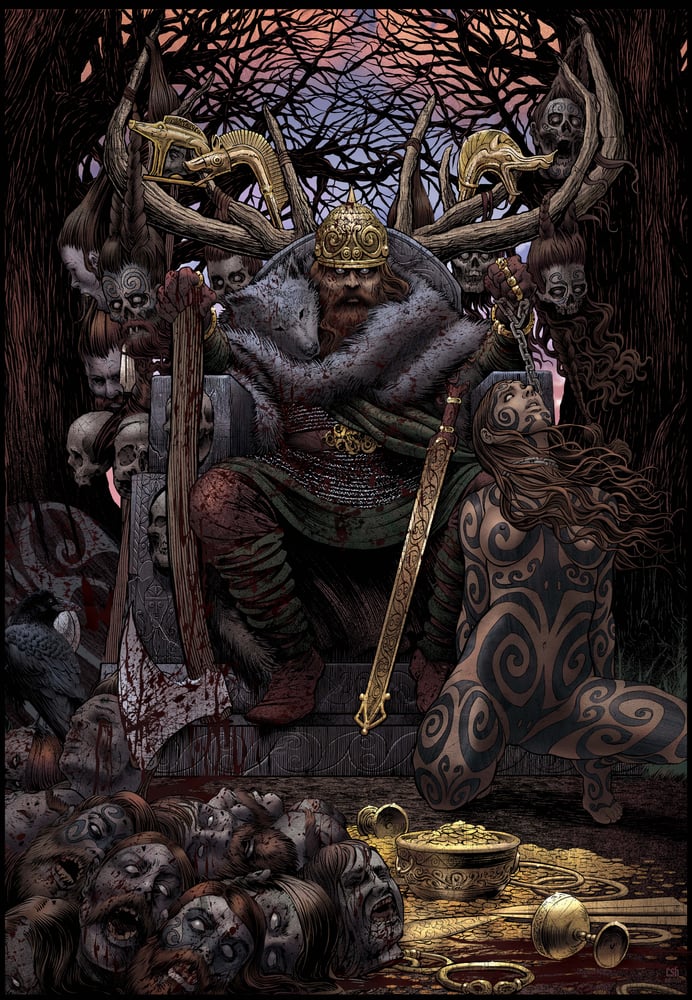This article was originally published here in July 2014.
It’s common knowledge that languages are fluid things which merge into one another and evolve to become new languages. But the way they change isn’t necessarily natural or arbitrary. The changes that occur to languages are often the result of wars, genocides, mass migrations, political meddling and religious taboos. The point of any language is to make oneself understood and this fact has meant that geography maintains the distinct character of different languages so that they remain intelligible to those inhabiting a certain area.
Linguistic purism is usually about preserving a language and protecting it from being corrupted by the introduction of foreign words. But Anglish is a bit different from other types of linguistic purism because it isn’t intended to preserve the English language as it is spoken now, nor as it has ever been spoken. Instead Anglish is a form of English stripped clean of the last 1000 years of non-Germanic influence, while also being brought up to date in terms of modern syntax, grammar and spelling.
So words like love, which is derived from the Old English word lufian, remain as they are in Anglish, while words like horticulture, the first part of which is derived from the Latin hortus meaning garden, have to be altered. The Anglish translation of horticulture is wortcraft, which is a compound of wort, meaning plant, and craft, meaning work.
Anglish speakers are a fringe movement of linguistic purists who want to streamline the English language and rid it of words of un-Anglo-Saxon origin. They don’t speak Old English as it was, because they keep the modern versions of words derived from Old English ones, but they replace words derived from French or Latin with what they consider to be the most appropriate Germanic English equivalents.
Anglish speakers haven’t had to invent an entire language as such, because most of the normal English words we use in daily conversation are of Old English origin. But although spoken English is primarily Germanic, the vast majority of words in the English language are of non Germanic origin, and this is where Anglish purists have had to be inventive. The words they have created are quite charming but confusing at times. Fortunately the Anglish Moot have provided an online
Anglish Wordbook (wordbook is Anglish for dictionary) to help you learn the lingo.
In many cases you can guess what is meant because Anglish is quite intuitive. “Expand” is replaced by swell while “edit” is replaced by bework. The Anglish movement has roots way back in the late 1800s when Elias Molee advocated an English purged of its Romance components. He made his case in two books; “Pure Saxon English” and “Plea for an American Language, or Germanic-English”. He proposed a language similar to Anglish called Tutonish, which was intended to be a “union tongue” for all the Germanic-language speaking peoples, with a schematised English syntax and a largely German- and Scandinavian-based vocabulary.
In 1989 Poul Anderson wrote a short text about atomic theory in a version of English free from Romance elements. The text entitled “Uncleftish Beholding” is seen as the blueprint for the modern Anglish movement and what it can achieve. These opening paragraphs give you a feel for how Anderson made scientific speech seem more accessible and almost folksy.
“For most of its being, mankind did not know what things are made
of, but could only guess. With the growth of worldken, we began
to learn, and today we have a beholding of stuff and work that
watching bears out, both in the workstead and in daily life.
The underlying kinds of stuff are the *firststuffs*, which link
together in sundry ways to give rise to the rest. Formerly we
knew of ninety-two firststuffs, from waterstuff, the lightest and
barest, to ymirstuff, the heaviest. Now we have made more, such
as aegirstuff and helstuff.”
The compound words like ymirstuff and aegirstuff reference figures from Nordic mythology, like the primordial giant of creation Ymir and the God of the sea
Aegir, in order to describe the base elements of the universe in a Germanic context. Anderson also borrowed from German words to create “waterstuff” and “sourstuff”, coming from Wasserstoff (hydrogen) and Sauerstoff (oxygen).
It is unlikely that the Anglish dialect being created by linguistic enthusiasts will ever become widespread, but it is not without value. One thing about Anglish words is that they are more consistent and easier to understand if you have never heard them before. This is a great lesson for journalists, poets and authors struggling with vocabulary. Language is, after all, a means of making oneself understood. If we endeavour to express the more complicated concepts of life and science with the most basic Anglo-Saxon language possible, then we may find the language is not only easier to understand but also sounds better.




















